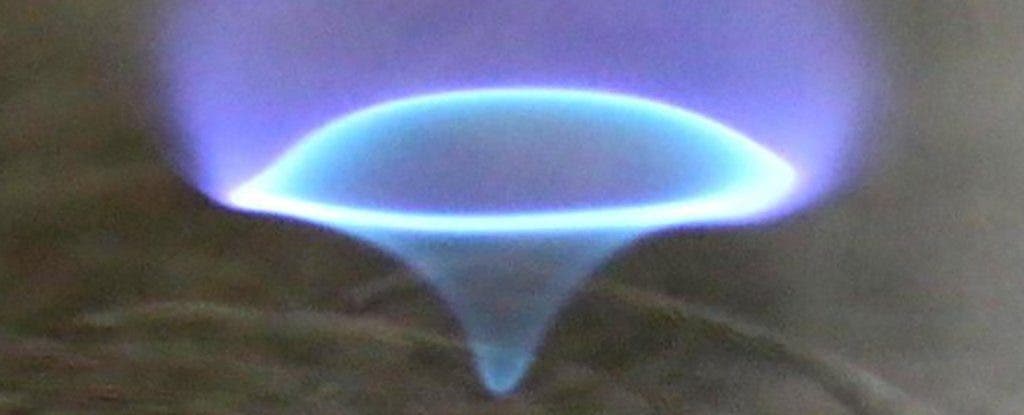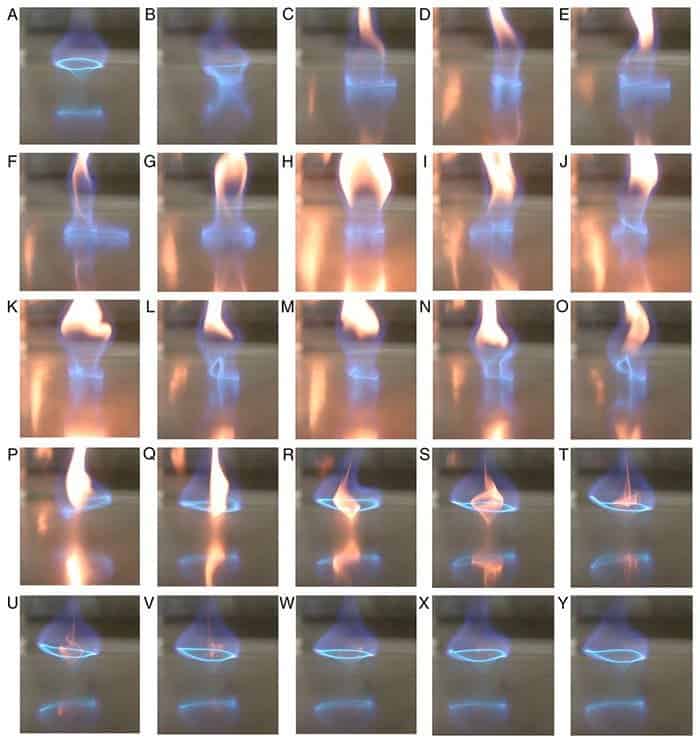The ‘blue whirl’ is a very specific type of fire, one which could perhaps help in cleaning up oil spills, or even in burning fuel more efficiently.

A fire whirl consists of a core – the part that is actually on fire – and an invisible rotating pocket of air. The blue whirl is almost identical in structure, being a more refined form of fire whirls which sometimes occur in nature, burning extremely efficiently.
“A fire tornado has long been seen as this incredibly scary, destructive thing. But, like electricity, can you harness it for good? If we can understand it, then maybe we can control and use it,” said fire protection engineer, Michael Gollner, from the University of Maryland.
The color is highly significant in this case: a yellow flame comes from radiating soot particles, because there isn’t enough fuel to burn all the particles. Meanwhile, a blue flame indicates that everything is burned completely, which means that the fire is burning efficiently.

So far, they’ve managed to keep this type of flame going for 8 minutes, but they say they can extend it even more. If this is the case, then the approach could be used to clean up oil spills by burning them completely. It’s an interesting example of harnessing a violent power and putting it to good, peaceful use.
“A fire whirl is usually turbulent, but this blue whirl is very quiet and stable without visible or audible signs of turbulence,” said one of the researchers, Huahua Xiao. “It’s really a very exciting discovery that offers important possibilities both within and outside of the research lab.”
Aside from expanding our understanding of fluid and fire mechanics, this could have a bunch of practical applications, but it’s still the early days of research. Of course, getting it to work in the lab is one thing, and doing something practical with it is completely different. Scaling it up is also a major challenge, but researchers are optimistic.
“This is the first time fire whirls have been studied for their practical applications,” said Gollner.
The findings have been published in Proceedings of the National Academy of Sciences. Journal Reference: From fire whirls to blue whirls and combustion with reduced pollution






